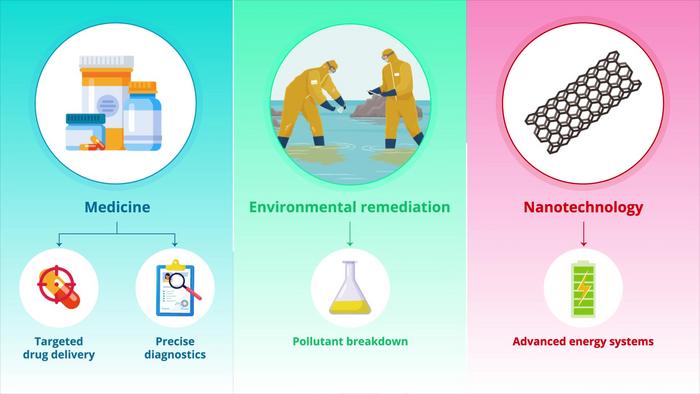In the realm of bacteria, motors are not merely mechanical devices; they have evolved over millions of years to power the microscopic movements of living organisms in an aquatic environment. At the forefront of this micro-world are the flagella, tail-like structures that spin, allowing bacteria to navigate through fluid with remarkable efficiency. This remarkable locomotion is powered by intricate protein complexes known as flagellar motors, which demonstrate the exquisite engineering of biological systems.
The flagellar motor, a biological marvel, is primarily composed of two pivotal components: the rotor and the stator. The rotor serves as a central rotating entity anchored to the cell membrane, directly influencing the motion of the flagellum. The stators, in contrast, are smaller, strategically positioned structures equipped with ion pathways that can conduct protons or sodium ions, depending on the bacterial species. As charged ions traverse through these stators, they induce structural modifications that lead to a push against the rotor, initiating its rotation. Despite extensive research dedicated to understanding these stators, the intricate nature and precise functioning of the ion pathways have often remained shrouded in mystery.
A groundbreaking study delves into this complexity, led by Assistant Professor Tatsuro Nishikino of the Nagoya Institute of Technology. This research focuses on the flagellar motor of the bacterium Vibrio alginolyticus, a species well-known for its capabilities in marine environments. The collaborative team includes researchers from Osaka University, Kyoto Institute of Technology, and Nagoya University, all united in their mission to unveil the elusive structures and mechanisms that constitute the flagellar motor. Their significant findings have been published in the esteemed Proceedings of the National Academy of Sciences of the United States of America, marking a notable contribution to the field.
Utilizing cryo-electron microscopy (CryoEM), an advanced imaging technique that enables the visualization of biomolecules at high resolutions by rapidly freezing specimens, the research team undertook an extensive analysis of both normal and genetically altered V. alginolyticus. This innovative technique allowed them to capture a series of dynamic images of stator complexes in varying states, effectively revealing critical molecular caverns integral to the passage of sodium ions. This approach has provided unprecedented insights into how the flagellar motor operates at a molecular level.
Central to their findings was the development of a model describing the mechanism of sodium ion flow through the stator structure. The researchers discovered that the stator subunits, organized in a circular formation, function as size-selective filters that permit the entry of sodium ions while excluding others. This design not only emphasizes the evolutionary refinement of these motors but also underlines the complexity of ion selectivity as a crucial factor in their operation. Moreover, the study elucidated how the presence of phenamil, a recognized ion-channel blocker, inhibited the sodium ion translocation through the stator, providing further avenues for understanding the regulatory mechanisms that govern bacterial motility.
The implications of this research extend beyond the realms of microbiology and into potential medical applications. Understanding the molecular underpinnings of flagellar motility may offer new strategies for combatting pathogenic bacteria that utilize this mechanism for movement. As noted by Professor Nishikino, “Flagellar-based movement is particularly significant in the context of infections and the virulence of pathogenic bacteria. Our investigation into the molecular mechanisms governing this motility could pave the way for novel interventions aimed at curtailing bacterial movement, thereby restricting their capacity to cause disease.”
In addition to the medical ramifications, this research carries implications for the engineering of nanoscale machines. The flagellar motors exemplify molecular nanomachines, possessing diameters of approximately 45 nanometers and an astounding energy conversion efficiency nearing 100%. The insights garnered from this study represent a pivotal stride towards elucidating the mechanisms of torque generation in these motors. Such knowledge is indispensable for researchers aiming to design and fabricate nanoscale molecular motors, paving the way for innovative applications in biotechnology and materials science.
As this research enriches our understanding of bacterial locomotion and its underlying mechanisms, it opens the door for future explorations. The synthesis of microscopy techniques with molecular biology paves the way for delving deeper into the engineered intricacies of flagellar motors and their potential applications in modern science.
In conclusion, as we stand on the brink of further investigations, we hold a sense of anticipation for the revelations that future studies of these natural machines will bring. Each discovery in this field enhances our comprehension of biological systems, potentially leading to transformative innovations in health, technology, and our understanding of life itself.
Subject of Research: Bacterial flagellar motors and their mechanisms
Article Title: Structural insight into sodium ion pathway in the bacterial flagellar stator from marine Vibrio
News Publication Date: 30-Dec-2024
Web References: DOI
References: Proceedings of the National Academy of Sciences of the United States of America
Image Credits: Tatsuro Nishikino from Nagoya Institute of Technology
Keywords
Bacterial flagella, flagellar motor, sodium ion pathways, cryo-electron microscopy, *Vibrio alginolyticus*, bacterial motility, medical implications, nanoscale molecular motors.
Tags: advancements in microbial engineeringbacterial flagellar motorsbacterial movement in aquatic environmentsevolution of bacterial flagellaion pathways in bacterial motorsmechanisms of bacterial locomotionmechanistic studies in microbiologyNagoya Institute of Technology researchprotein complexes in bacteriarotor and stator function in flagellastructural biology of flagellar motorsunderstanding bacterial motility





